An Institution of Higher Learning
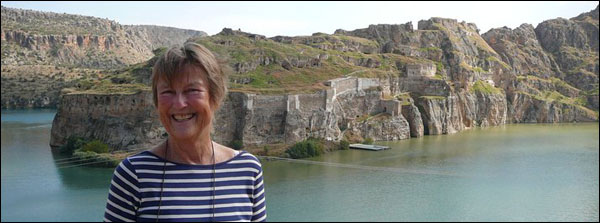
“I still have the stained and faded green notebook in which I wrote all the recipes, 96 in all, beginning with velouté de volaille (cream of chicken soup) on October 23rd and finishing with dinde truffée aux marrons (turkey with truffles) and mandarines givrées (tangerines filled with a boozy sorbet). Most of our often very arcane menus consisted of dishes I wouldn’t/couldn’t serve today, such as riz à l’impératrice, an elaborate form of rice pudding studded with glazed fruit cut into little squares and triangles, or boeuf mode en gelée, a two-page recipe involving several daunting preliminaries.”—Diana Farr Louis
Eating Well Is The Best Revenge
By Diana Farr Louis
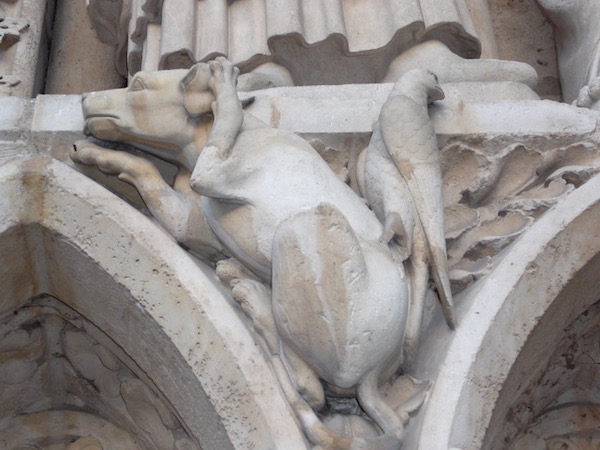
ATHENS Greece—(Weekly Hubris)—January 2018—“I’m sorry, but in order to take this job in my house as a jeune fille au pair, you must be enrolled in an institution of higher learning. That’s my policy. To help genuine students. Language classes do not count.”
It was October 1963 and, after a blissful summer in Greece, I was about two weeks into my dream of spending a year in Paris, the City of Light and of Scott Fitzgerald, Gertrude Stein and friends, Edith Piaf and Jean-Paul Belmondo, just to mention a few of my idols.
I’d had a gentle start, staying with my favorite cousin and his family in a posh flat in the 16th Arrondissement, but it was time to spread my wings, get a job, and perfect my French. After nine years of school, I still had trouble finding words much less understanding the ratatatat of Parisian parlance.
So I’d started an intermediate level course at the Alliance Française and answered an ad for mother’s help. I’d also stopped by The International Herald Tribune offices to offer my services, as “an honors graduate in English from Harvard.” Their answer was brusque, leaving no room for argument: “You and how many others!” A chunk of my dream of beginning a literary career shattered, but I pulled myself together and walked out with dignity.
Madame Billard’s rejection of the Alliance Française came as another blow.
After four years of college, I had absolutely no wish to return to academia so soon or indeed ever again. A poker-faced woman, she was hardly cozy and I hadn’t yet met my charge, but I didn’t want to give up and said I’d think about it and went out for a walk.
The apartment was at the upper end of the Boulevard Haussmann, a bourgeois, colorless area with neither charm nor grandeur. I hadn’t gone more than a few blocks when a plain but elegant storefront stopped my stroll.
Against the dark blue façade a discreet sign, Le Cordon Bleu, was written in gold. Before blue curtains leaving no windows to peer through, I hesitated a few minutes and then opened the door. A receptionist told me a demonstration was about to begin and that I could watch it for a few francs. So I slid into a seat in the third row of the small lecture hall to the right and waited expectantly.
People began to fill the seats and, just before the chef arrived, a perfectly coiffed blonde in a red Chanel suit took her place in front of me. To my surprise, this ravishing creature turned around, gave me a short stare, and then said, “Hi, Farr.” It was Dee, an old pal from my boarding school class.
She had been a rather tubby number in our unflattering uniform of knee-length tunics with bloomers but had turned into a sophisticated beauty in the five years since we’d last seen each other.
It took me a few minutes to recover and our excited whispers hushed as the chef began his performance. Sadly, I do not remember his name, but he was appropriately portly, a master of the culinary arts as well as a splendid showman and he was also the chef at the Hotel Crillon. I have no recollection either of what he cooked that day, but I will never forget the way his rather stern face crinkled into a broad smile when it came time to decorate the dish.
When the demo finished, Dee told me she’d been in Paris for several months already and was enrolled in the Cordon Bleu practical class that met three mornings a week as well as attending the daily sessions in the lecture hall. It did not take more than a second to convince me to do the same.
I signed up at once and rushed back to tell Madame Billard. “How would you feel about my studying at Le Cordon Bleu? After all, French cuisine is a cornerstone of French culture.” And indeed, she could not refuse.
By then it was time to introduce me to Jérome, aged six, who had just returned from school. He was a rather plain, solemn little boy with black hair, brown eyes, and not much of a smile. Strangely, our only common bond would prove to be food, as he always took great interest in what I’d been cooking.
My own school days were unadulterated fun. A group of about nine people, mostly women, met in the Cordon Bleu kitchens at around 9 a.m. to prepare a three-course lunch, which we would then eat. We took turns making the appetizer, entrée and dessert at different work stations, learning very basic techniques such as how to chop and slice as well as being initiated into the mysteries of pastry—pâte à choux, pâte feuilletée, pâte brisée—which, unfortunately, I never mastered.
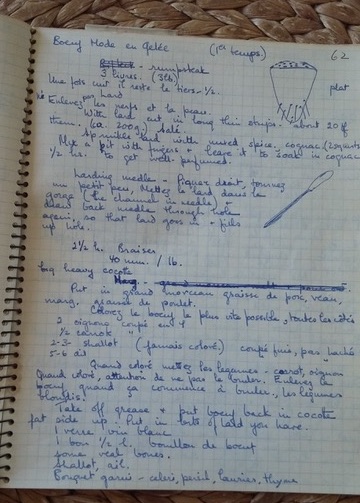
I still have the stained and faded green notebook in which I wrote all the recipes, 96 in all, beginning with velouté de volaille (cream of chicken soup) on October 23rd and finishing with dinde truffée aux marrons (turkey with truffles) and mandarines givrées (tangerines filled with a boozy sorbet). Most of our often very arcane menus consisted of dishes I wouldn’t/couldn’t serve today, such as riz à l’impératrice, an elaborate form of rice pudding studded with glazed fruit cut into little squares and triangles, or boeuf mode en gelée, a two-page recipe involving several daunting preliminaries from sticking bits of lard into the meat to making the gelatine from scratch with a pied de veau (a veal hoof)! How our tastes have changed. But, apart from the pastry, the fundamentals have stayed with me: how to make sauces, whisk cream and egg whites in a copper bowl, deglaze a pan. My repertoire soon leapt from bacon and eggs to gnocchi, profiteroles, omelettes, and soufflés.
At the same time, my French improved. Although my note taking started in English, it moved to a kind of “Franglais” and ended in French. I progressed much more rapidly in the kitchen than in the Alliance Française classroom which had seemed to fixate on the imperfect subjunctive, which I doubted I would ever use.
What made those mornings particularly pleasant was the team of menials—young lads aspiring to be chefs—whose only job was to clean up after us. So we had no pots and pans to scrub, no surfaces to wipe or peels to discard.
We also had a double reward: we sat down at noon to eat the fruits of our labors, always accompanied by a couple of glasses of wine. As for the chef, he was a tough task master and could erupt with scorn if we or the boys did something careless, but he was quick to console if a mayonnaise curdled or a soufflé caved in.
After lunch, we would have time for a breath of fresh air and a short post-prandial promenade before the afternoon’s demonstration. Then our tireless chef would take his place behind a long worktable cum stove. A pink-faced man with a belly that spoke of a lifetime of tastings, he was first and foremost a performer. He knew exactly how to capture and hold our attention as he’d chop, stir, and assemble his dishes, describing with passion each step, each trick, building up to the moment when like a magician he’d lift the creation in triumph from the oven.
Desserts were his favorites. Wielding a pastry tube like a paint brush, he would inscribe frills and garlands with a flourish while total silence reigned. We dared not trespass on his concentration. Finally, eyes sparkling, he would lift his head and beam the widest smile at his audience and we, delighted, would break into applause.
And then it would be time to go home and tell Jérome about the day. Even at six, he was a gourmet.
“Alors, Mademoiselle Diane,” he would address me like an inquisitioner, “qu’est-ce que vous avez fait aujourd’hui?” [What did you learn to cook today?]
One day, my answer was, “Bouchées à la reine.”
“Ah,” said Jerome. “Ça j’aime beaucoup. C’est le ris de veau avec de la pâte feuillettée et une sauce béchamel.” [I love that. Sweetbreads with puff pastry and bechamel sauce.]
I was bowled over. Where else in the world would you find a first-grader who not only knew what sweetbreads were but actually smacked his lips at the mere mention of them?
Our relationship did not last long. I was not cut out to be a jeune fille au pair and, after one short month, I’d moved out to my own apartment with another school friend, and subsequently, Dee, on the Rive Gauche, where my clothes hung next to garments owned by Jean-Paul Belmondo and Jane Fonda. (Was I sniffing at the hem of glamor?)
I never intended to be a chef, either, and my six weeks at Cordon Bleu did not even furnish me with a blue ribbon, but I couldn’t have asked for a more formative institution of higher learning. That brief but intensive indoctrination gave me enough essentials to be a decent cook but, far more important, it taught me how to eat, to appreciate food and the culture that makes a dish more than a dietary necessity in any language. It laid the foundations for a lifetime of appreciation of all the pleasures that go into making a meal and of sitting round the table with one or more “copains” to enjoy it.


Recipe
Tarte aux pommes or Apple Tart
Here is the recipe, number 89, that I wrote down for Tarte aux pommes, one of the easiest and most straightforward in my green notebook.
1/2 packet frozen puff pastry, pâte feuillettée, unless you want to make your own
4 big tart apples (I use Granny Smith here in Greece)
100 g/½ cup sugar
4-5 tablespoons butter
apricot jam or the jelly of your choice (grape, currant?)
calvados or cognac
Preheat the oven to 240°C/460°F. Spread out one sheet of the puff pastry on a baking sheet covered with lightly buttered parchment paper. Peel the apples, halve them, and cut them into thin slices: you should get 12 slices per apple. Lay the slices, overlapping slightly, on the buttered pan. Put he smaller ones, if any, in the corners. Sprinkle with the sugar and dot with little bits of butter. Place in the oven and reduce the heat to 220°C/425°F. Bake for 30 to 45 minutes or until the apples and crust are browned to your liking. When done, paint with some warmed apricot jam mixed with a couple of tablespoons of calvados or cognac. Slide the tart from the paper onto a platter and serve.
![]()
To order copies of Diana’s Farr Louis’ newest book, A Taste of Greece: Recipes, Cuisine & Culture, from Amazon, click on the book cover below.
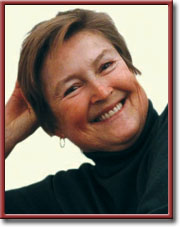
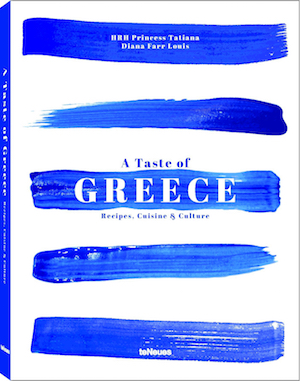
6 Comments
George T Karnezis
That list of famous writers who resided in Paris should also include Nikos Kazantzakis. There is a sign commemorating his residency at the hotel he lived in as a student in the Latin Quarter.
Anita Sullivan
This is such a deeply satisfying piece! I love that your short cooking course “taught me how to eat.” So many things we know how to do at a basic level, but also need to be taught in order to deepen the experience — singing, walking, parenting — and even eating!
diana
Thanks, George, for taking the trouble to comment. Of course, Kazantzakis belongs on any list of famous writers who lived in Paris, but I had yet to read him and he was not part of that glamorous scene in the 20s and 30s that became legendary and that I dreamed about. After all, I had only discovered Greece that summer and Zorba was not yet a film. Anita, your words mean so much to me — Thank you!
Sally Scoville
Diana, this is divine, and beautifully written. I never knew you had done this.
And Dee – Dee Brown! I think I was in Paris a year or two later, and she was ensconced (kept?) elsewhere, in the 16th…
Do please keep writing!
diana
Sally mou, how good to hear from you. I was sure with our mutual interest in food that we would have talked about it. And your sister being one of the many dear friends who thought of Rue Seguier as a home away from home. Dee disappeared, married her Pierre Bourgeois and was never heard of again. Sadly. And you can find lots of my writings right here on weekly hubris, going back to 2010, with other old friends featuring de temps en temps. Thanks for the encouragement.
Jean
Diana, this is yummy, in all senses of the word. I love your cleverness in finding a way around the conventional institution of higher learning, and I tried the tart, which, even in my tyro hands, turned out splendidly. Thank you.